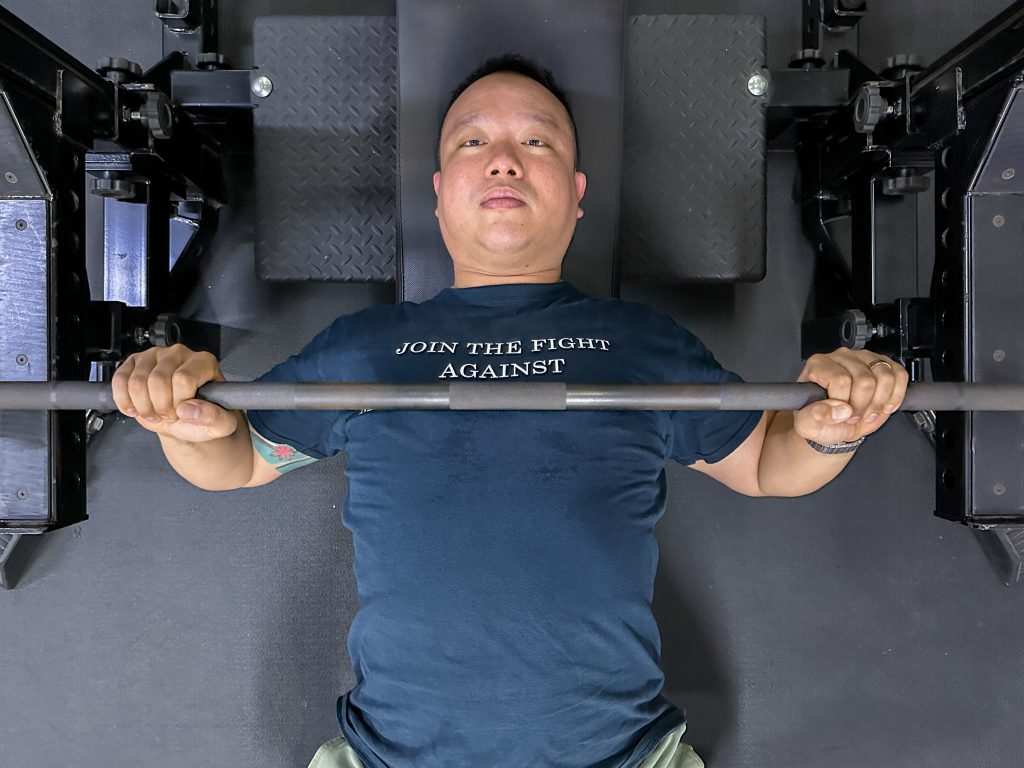
When teaching new lifters the bench press, I occasionally get asked, “When pressing the barbell up, should I press straight up?” The simple answer is “No, you should press the bar up and back/diagonally toward your shoulder.”
Since barbell training involves doing work against gravity, it does make sense to press the bar straight up so that it follows a vertical bar path. However, we intentionally coach the bar path on the bench press to be non-vertical. And while it sounds counterintuitive, we coach the bar path to be diagonal based on the mechanical and anatomical considerations involved on the bench press.
Let’s explore why the bench press deviates from the typical vertical path of other barbell lifts, the reason behind it, and how you can adjust your technique for better performance and avoid shoulder injuries.
Bar path in the bench press
Out of all the 5 basic barbell lifts in the Starting Strength program, the bench press is the only one that intentionally uses a diagonal bar path.
The starting position has the barbell directly above the shoulder joint. When you lower it, we want the barbell to contact on the chest somewhere around your nipple line. You then press it back up to lockout directly above your shoulder joint, resulting in a bar path that is not vertical.
When we lift barbells, one of the considerations that we take into account that will allow us to lift the most amount of weight is to maximise mechanical efficiency. And because gravity is pulling straight down, moving the barbell up in a vertical line is the most efficient way to move the barbell. So if vertical is the most efficient direction, why do we change it in the bench press?
The main reason for this deviation lies in the structure of the shoulder joint and the risk of shoulder impingement.
Shoulder impingement on a vertical bar path
You’re likely reading this article seated. To better understand how the shoulder impingement occurs if you try to use a vertical bar path on the bench press, try this out.
Sit up tall and imagine that you’re doing a bench press. You’re at the start position of the bench press with your arms stretched out in front of you, perpendicular (90 degrees) to your trunk, with your hands, elbows, and shoulders aligned in a straight line.
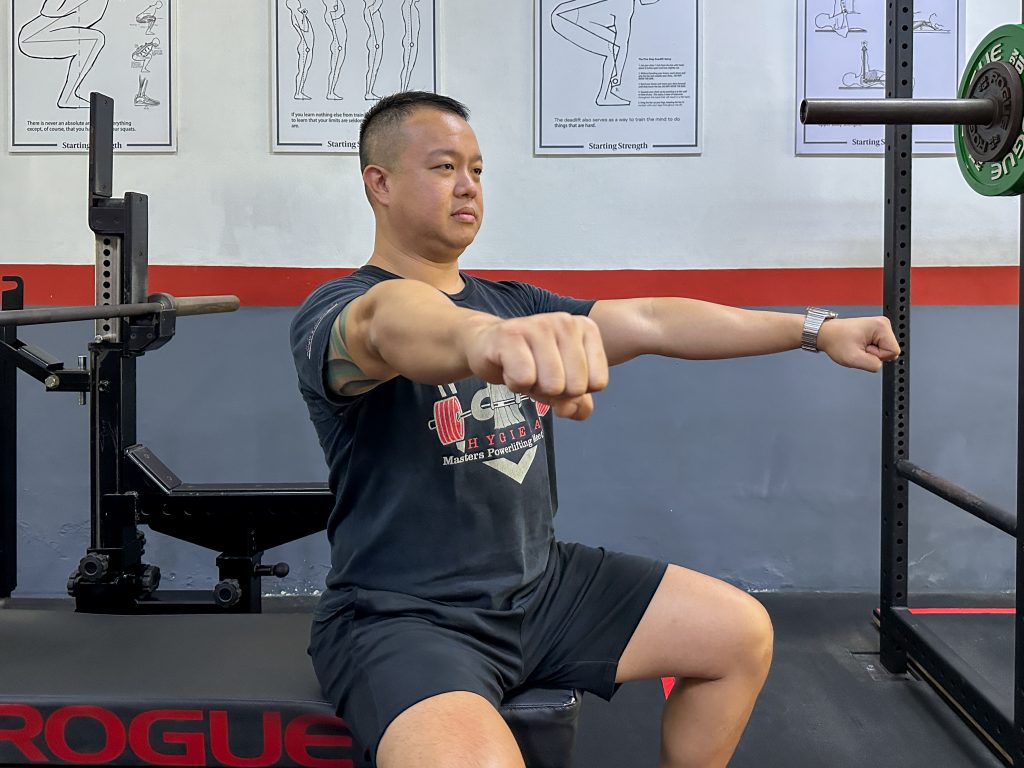
From this position, gradually move your elbows back horizontally as if you’re lowering the barbell. When your elbows are in line or just posterior to your shoulders, you’ll feel like you can’t move your elbows back any further and there might be some discomfort at the shoulder joint. That is shoulder impingement.
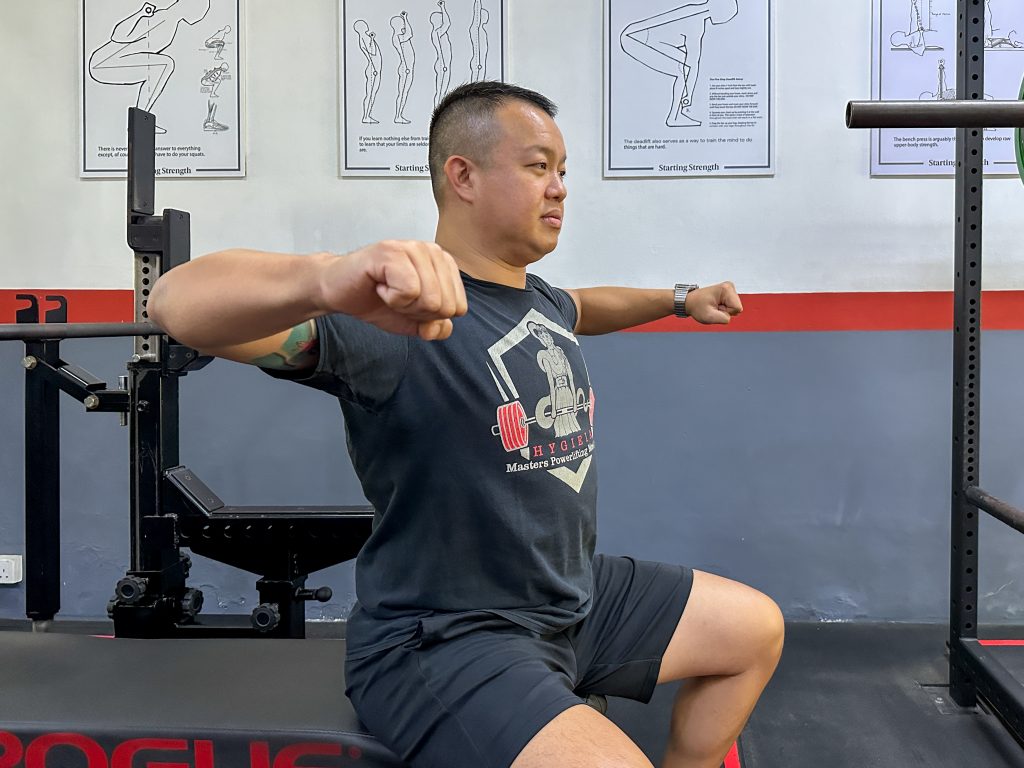
Now, drop your elbows down slightly, making the angle between your upper arm and trunk a little more acute than 90 degrees. Now try moving your elbows further back. You’ll find that it can now do so, and no impingement occurs.
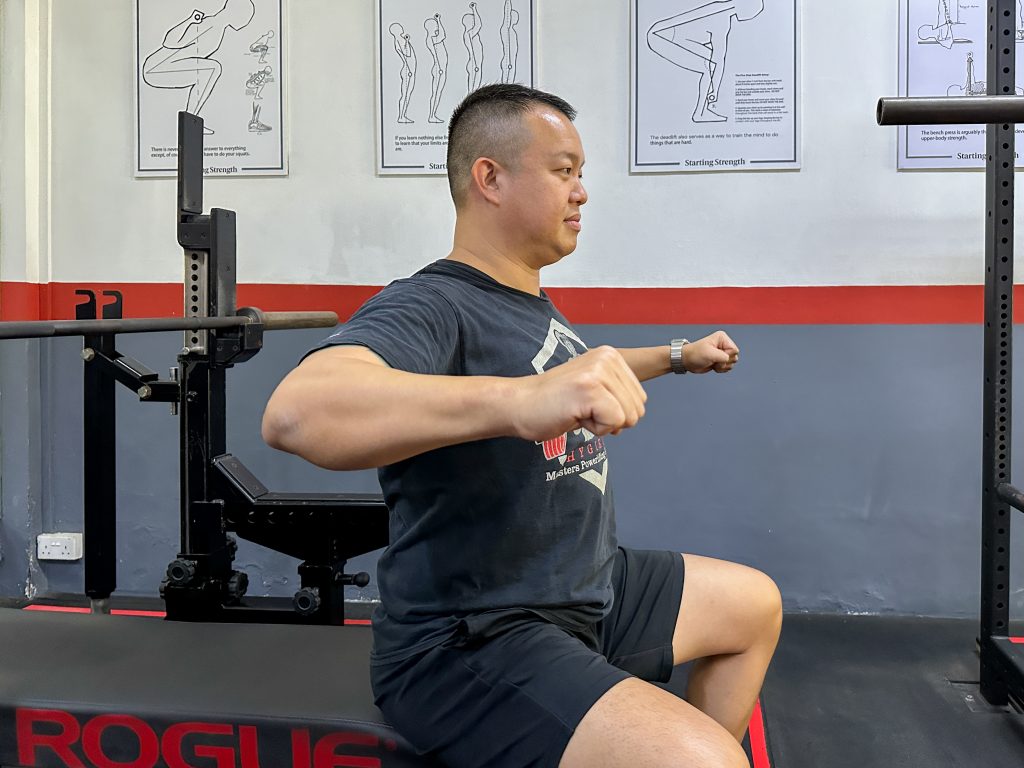
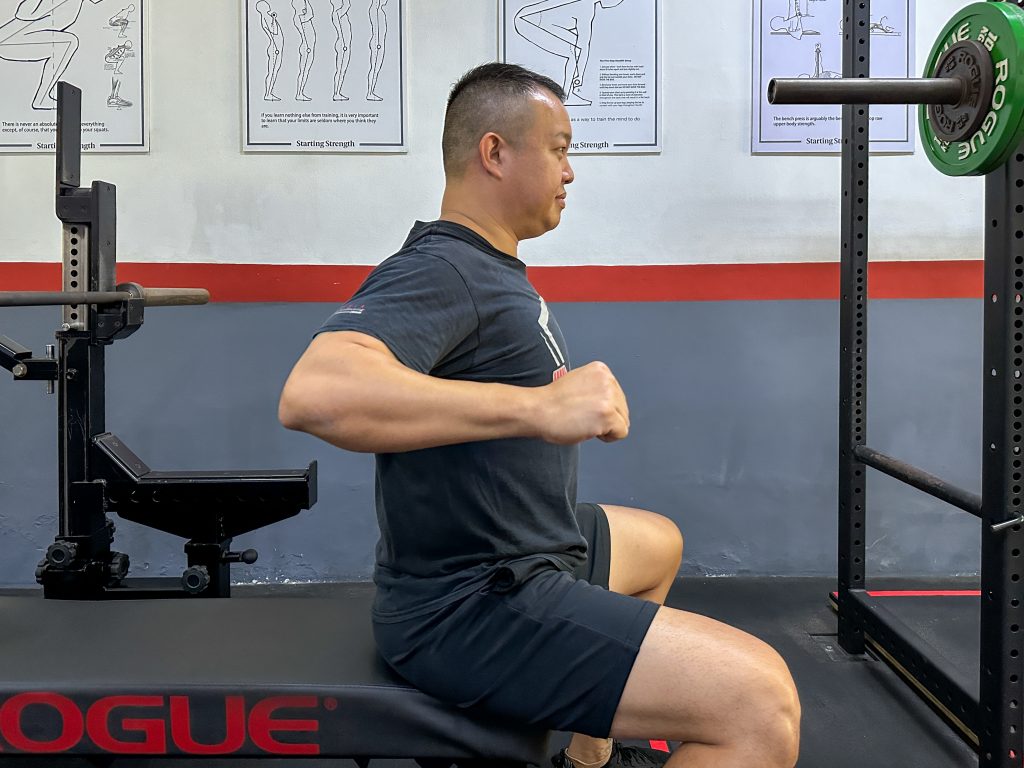
Lowering the arms from 90 degrees of abduction prevents the rotator cuff tendons from being mashed between the humerus and scapula. The angle used will be between 45 – 75 degrees, depending on your body mechanics.
The non-vertical bar path
The starting position of the bar is directly above the shoulder joint. On the way down to the chest, the bar travels diagonally towards somewhere around your nipple line, so when you press back up, you need to think “press up and back” instead of just straight up to get the bar to lock out directly above the shoulder joint again.
If the lifter presses the bar vertically up after the bar contacts on the chest inferior to the shoulder joint, he will lock out at a position with an unnecessary moment arm between the barbell and shoulder joint.
Pressing the bar up and back towards the shoulder joint, as opposed to pressing it straight up, will make the rep feel easier as well because the moment arm between the barbell and shoulder joint gets shorter as the bar ascends.
Still, the diagonal path is a compromise. While it helps avoid shoulder impingement, the non-vertical path means that the lifter now has to deal with a moment arm: the mechanically inefficient horizontal distance between the lockout position and the touch point on the chest.
Arching the back to regain efficiency
Another point that we coach our lifters to do when they bench press is to arch their backs and one of the reasons why we do so is to regain some mechanical efficiency.
When you arch your back on the bench press, you’re shortening the moment arm between the shoulder joint and the touch point on your chest. This allows for a less diagonal bar path and restores some mechanical efficiency.
Individual variations in anatomy and flexibility will dictate the arm angle and touch point on the chest that is optimum for the lifter.
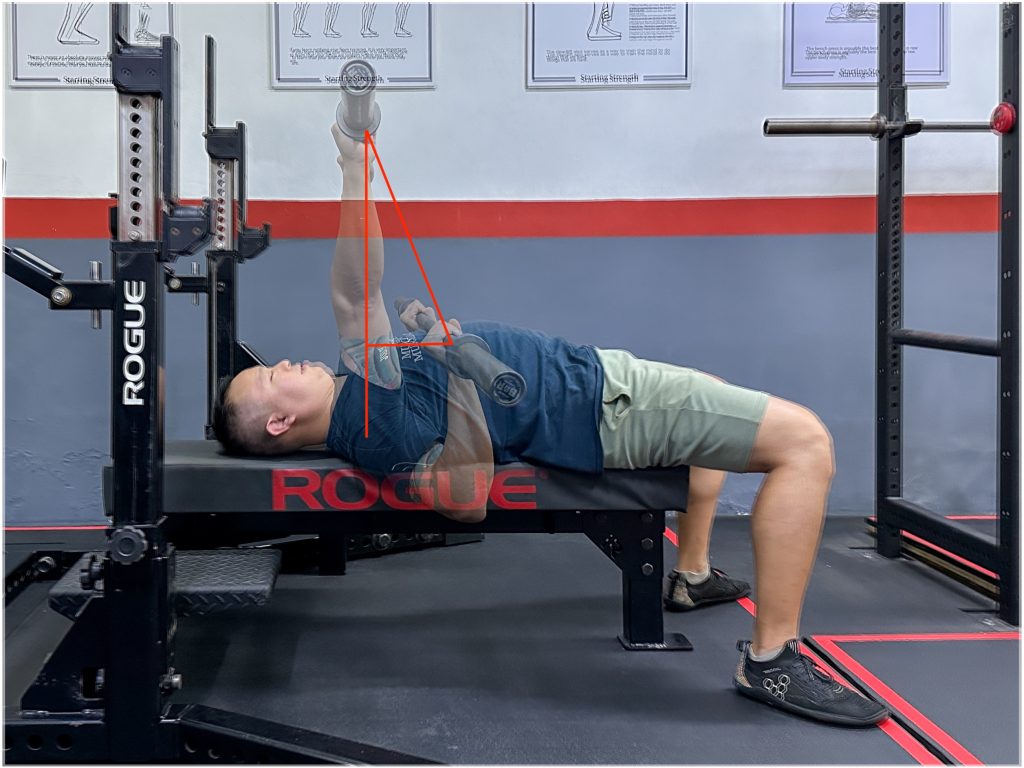
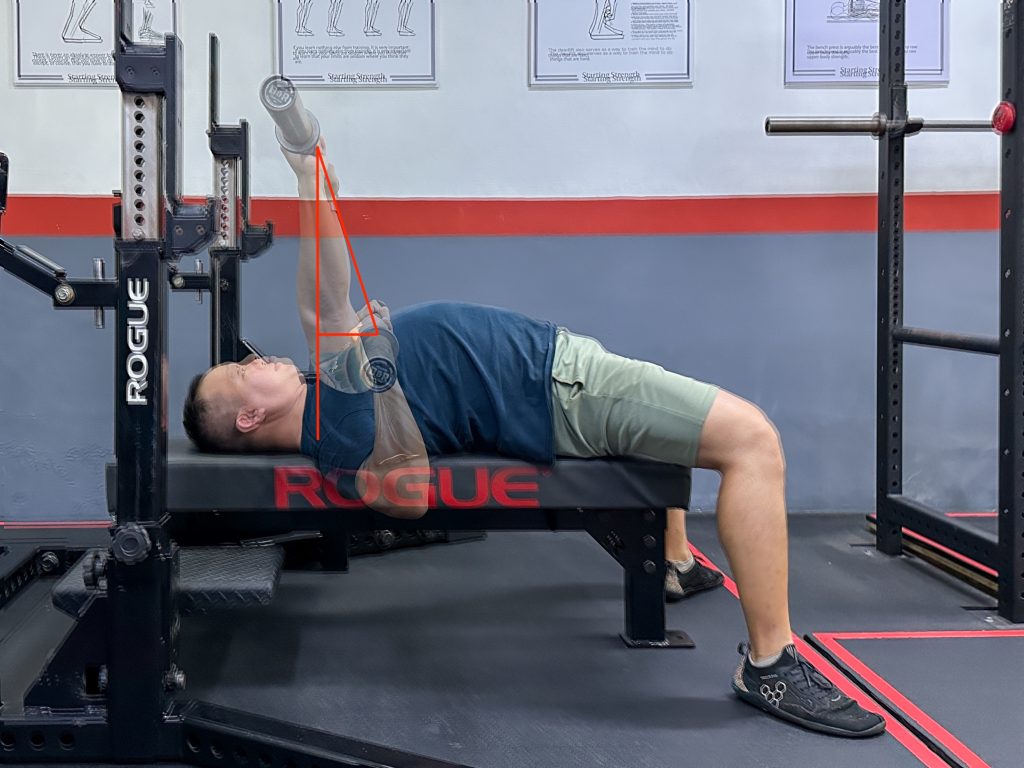
Tradeoff between avoiding injury and efficiency
A common misconception is that the bench press is inherently dangerous for the shoulder joint and can cause injuries. However, this isn’t true if you bench press correctly with proper technique and follow a well thought out program. When done correctly, the bench press is safe and the best lift for training upper body strength. The lift isn’t the problem: it’s user error.
If there’s anything to take away from this article, it’s this: the bar path on the bench press is a diagonal line and when you’re pressing the bar back up from your chest, think about pressing the bar both up and back towards your shoulders, and not just straight up.
By understanding why we use a diagonal bar path and adjusting your technique to accommodate your anatomy, you can maximise bench press strength gains while minimising shoulder injuries.
For more safety tips on the bench press, check out our other articles on how to find your ideal rack height and how to be avoid being pinned by the bar when you miss an attempt.

